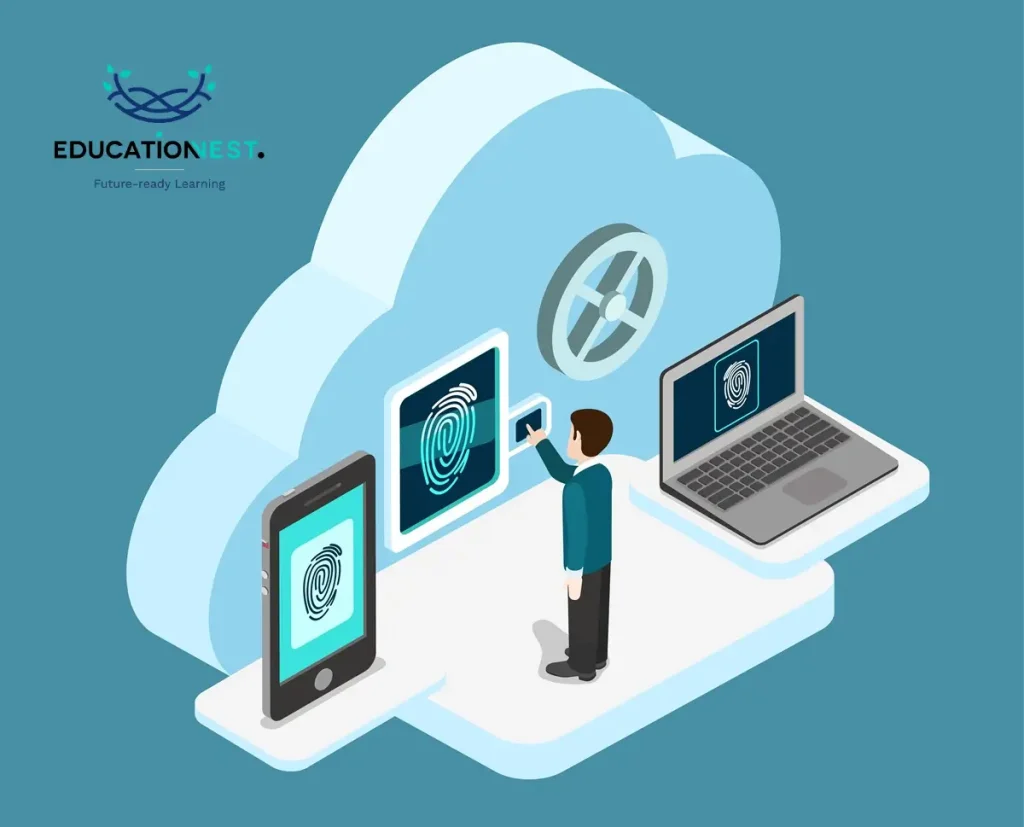As more and more businesses are shifting operations to the cloud, knowing how to protect your data in the cloud has never been more crucial. With the convenience and scalability of cloud storage also comes the responsibility of keeping sensitive information safe. And with cyber threats always changing, it can feel tricky to stay secure. But it does not have to be that way. If you are a cloud engineer, you can just follow some simple practices to make a big difference. In this article, we will cover the best practices of cloud security so you can keep your data safe while enjoying all the benefits.
3 Biggest Cloud Security Issues
As companies have increasingly started to rely on cloud services, they are facing some unique cloud security challenges that are putting their sensitive data in harm’s way. The shift to the cloud has introduced troubles that traditional security measures may not adequately address. Knowing more about these challenges is the only way for businesses to develop effective strategies. If your company has newly made the shift to the cloud, here are some of the cybersecurity challenges you could face:
- Misconfigurations: Misconfigured cloud settings are a major source of issues. Errors during the setup or management of cloud resources can unintentionally lead to these problems.
- Cloud vendor weaknesses: The problems may start from cloud providers too! Even though they implement robust security measures, they are not always foolproof.
- Employee errors: Human mistakes like falling for phishing scams or mishandling data can create serious security gaps.
Best Practices to Ensure Cloud Security
While there could be numerous other problems that could lead to a breach, the solutions to most (if not all) of them are just simple steps that you need to know. Here are the best cloud security practices for companies that you can enforce to keep your data safe:
- Ask the Right Questions
The first step to ensuring cloud security is to learn how to ask the right questions. You might be making a bigger mistake than you think if you are simply assuming your cloud provider has security covered!
Do not assume but ask tough questions first. Knowledge is power. Learning about the security measures and processes of your cloud vendor can tell you about potential weaknesses or gaps in their protocols. This is not just important to meet regulatory standards but also ensures their security is at par with your organization’s needs.
It is tempting to trust big-name providers, especially when they claim to follow practices like zero trust security. But, security strategies vary more than you think when you jump between vendors. Here is a checklist of questions that companies serious about keeping cloud data safe should ask:
- Location: Where are the provider’s servers physically located?
- Security Protocol: What steps do they take when a security threat is suspected?
- Restoration Measures: What is their plan for disaster recovery?
- Protection: How does the provider secure access points to the cloud?
- Client Support: What level of technical support can you expect from them?
- Penetration Tests: What were the findings of their latest penetration tests?
- Encryption: Do they encrypt your data both during transfer and when stored?
- Provider Access: Which of their employees have access to your data?
- Authentication: What methods and tools do they use for user authentication?
- Compliance: Which regulatory compliance standards do they follow?
The answers will tell you if they are already following cloud security best practices and help you make a more informed choice.
- Train Your Staff
Training your staff is a key part of keeping your cloud environment secure. By teaching employees about cybersecurity best practices, you are simply protecting yourself from unauthorized access. Educated employees can spot threats and safeguard sensitive data. Here are some approaches you can take:
- Highlight shadow IT risks: Inform staff about the dangers of using unauthorized tools that could compromise security.
- Conduct comprehensive training: Focus on identifying threats, setting strong passwords, and recognizing social engineering.
- Offer specialized training for security teams: Keep security personnel updated on the latest threats and response strategies.
- Encourage accountability: Regularly discuss data privacy, password management, and the importance of security protocols.
If you are looking for a robust cybersecurity training program from an experienced corporate training provider who has rich experience in building competent teams, EducationNest is the best choice! With multiple expert-led courses and years of experience, their training programs are built to effectively deliver the best training to corporate teams.
- Put a Cloud Security Policy in Place
A cloud security policy should be in place that provides clear guidelines on who can access cloud services, how they should be used, and what types of data can be stored. It should also outline the security protocols that employees must follow. By having a robust cybersecurity policy book for your company, you ensure uniform security practices across the organization. Employees should be encouraged to follow it religiously to minimize the risks tied to cloud usage and safeguard sensitive information from breaches.

Read More
The Top 3 Sales Techniques That Deliver Results in India
5 Essential Tools for Employee Development Success
- Secure Your Endpoints
One of the best ways to ensure cloud security is to secure your endpoints (all laptops, desktops, mobiles/tablets) as these are critical touchpoints for accessing the cloud and data stored there. Since they connect directly to the cloud, securing these devices will prevent unauthorized access. Regularly review your endpoint security practices to ensure safe access to cloud data.
Start with a layered security approach that includes firewalls, anti-malware, intrusion detection systems, and strict access controls. Automated tools like Endpoint Detection and Response and Endpoint Protection Platforms are other options. To name some of the basic ones are patch management, data encryption, and VPNs.
- Conduct Pentesting & Vulnerability Scans
Audits, pen-testing, and vulnerability scans are crucial to complying with security standards. These practices will help detect potential risks before you can think about strengthening your defenses against cyber threats. Here is how you can implement them effectively:
- Conduct penetration tests: Check the effectiveness of your cloud security measures by simulating attacks to find out gaps that can be filled.
- Run vulnerability scans: Use cloud vulnerability scanners to spot misconfigurations and other issues.
- Perform regular security audits: Review your security controls and service providers to ensure they meet your security agreements and standards.
- Review access logs: Regularly check access logs to ensure only authorized users can access sensitive data.
Conclusion
Cloud security is a shared responsibility. By understanding the best cybersecurity practices and strategies, you can confidently put the challenges behind you. A robust approach to cloud security, along with support from your provider and employees is the only foolproof way to protect your cloud environment. However, if your current security methods are not sufficient, it is crucial to explore additional layers of support.
If you are exploring employee training to improve your security systems in place, EducationNest can help you in this venture. Being the top corporate training provider in India, they have the best cybersecurity training program for corporates to help you build competent in-house teams.
